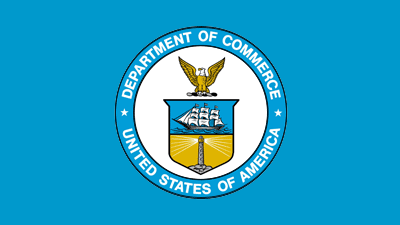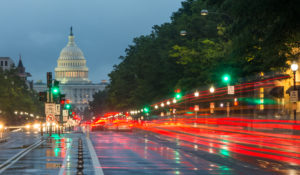
Remarks by Deputy Secretary of Commerce Don Graves at the Commercial Flight Federation
Aug 27, 2024
Good morning. Thank you to Isaiah Wonnenberg with the Commercial Spaceflight Federation and Frank Jannuzi from the Mansfield Foundation for organizing this event along with their partners from ASTEC.
The U.S.-Japan relationship has special meaning to me. In 1860, my three-times great-grandfather, James Wormley, a hotelier and small businessman in Washington, DC, hosted and catered the first Japanese Commission to visit the United States.
This meeting – 164 years later – comes at a time when the U.S.-Japan relationship has never been stronger and more important, not only for our two countries but for the Indo-Pacific and the world.
The United States is undertaking unprecedented efforts with partners in the region to realize the vision of an Indo-Pacific that is, in President Biden’s words, “open, connected, prosperous, resilient, and secure.”
To this end, the Administration and the Commerce Department are doing three things:
First, we are making strategic domestic investments while also deepening commercial ties with our allies in critical and emerging domains, like space, that will have an outsized impact on our economies.
Second, we are taking steps to protect our national security by fostering trusted tech ecosystems, combating economic coercion, and preventing malign actors from using sensitive goods and technologies to undermine our national security and the security of our partners and allies.
Third, we are expanding our engagement, along with the private sector, in the Global South to offer our partners more attractive infrastructure alternatives to help meet their most pressing economic needs.
In each of these areas, the relationships between the United States and Japan are not only indispensable in ensuring our own success, but also for security and prosperity in the rest of the world.
We at the Department of Commerce are thrilled to be at the forefront of U.S. efforts to grow the space economy.
We have reorganized and elevated our Office of Space Commerce, under Director Richard DalBello, who has decades of experience in the industry.
Two years ago, we formed the Commercial Space Coordination Committee. It includes the heads of nearly every Commerce bureau, because our work expanding space commerce isn’t confined to one office, but involves international trade, economic development, broadband-expansion efforts, cybersecurity expertise, and even minority business outreach to expand our supplier base.
We have organized our space commerce efforts into five areas of focus.
First, we are working to coordinate regulatory functions.
In order to invest and compete, businesses need clarity, consistency, and transparency. We have strongly supported Vice President Harris’s work through the National Space Council to ensure the United States establishes a clear, modern, and comprehensive regulatory framework.
We have also increased and sped up our licensing of commercial remote sensing satellites and eliminated more than 40 operating restrictions that had previously been imposed on U.S. imaging satellites, with plans to remove even more restrictions in the near future. This streamlining has reduced the average time to issue a license from 48 days in 2020 to 14 days today – a 70% reduction.
Second, we are growing the customer base for U.S. commercial space goods and services.
Many of you took part in last year’s Track 1.5 session during the U.S.-Japan Comprehensive Space Dialogue in Tokyo. We have similar engagements with Korea, India, Singapore, the UK, the Quad, and others. As we grow these relationships, we also grow opportunities for the expansion of space commerce.
And there is no U.S. partner better than Japan who understands the market conditions necessary for entering advanced technology markets like space.
So, it’s crucial that we coordinate and partner as other countries look to our example, especially emerging players in the Global South.
Third, we are improving space safety and sustainability.
Space situational awareness, or SSA, is an essential element of space traffic coordination for spaceflight safety and the sustainability of Earth’s increasingly congested orbits. In 2018, the Commerce Department was assigned responsibility for providing basic SSA services to commercial and civil space operators, a major new mission area that we are taking over from the Department of Defense. With thousands of new satellites now being launched each year, we recognize the urgency of fulfilling this mission to prevent the next catastrophic collision in space.
In the past year, we have made strides in building what we are calling our Traffic Coordination System for Space, or TraCSS. This system will enable commercial growth by providing the data and alerts needed to keep space operations safe and sustainable.
In addition, we are being very careful not to compete with the burgeoning commercial SSA market, but rather to leverage commercially available SSA software, data, and analytics to support our system.
We are nearing the launch of the TraCSS system at the end of September and look forward to coordinating with our counterparts in Japan to provide accurate and consistent alerts and warnings to operators in both our countries.
Our fourth area of focus is about promoting innovation, which is foundational to everything we do at the Commerce Department.
As part of this work, we are buying commercially available satellite data to improve weather forecasting while at the same time fostering the growth of new markets for satellite services.
We also know that next-generation satellite systems – and new space enterprises built to service and work with those systems – are going to need spectrum to develop to their full potential. We are doing all that we can with the Federal Communications Commission and the International Telecommunication Union to ensure that spectrum is available both for federal and private sector missions.
Finally, we are advancing Earth observation capabilities to empower better decision making.
The National Oceanic and Atmospheric Administration has been reimagining what its weather forecasting and climate monitoring satellite architecture could look like and has engaged with the community and issued study contracts to develop a more advanced and agile architecture in Low Earth Orbit and for space weather. We are building on-ramps for new technology and opening the door to more data purchases, rideshares, and hosted payloads.
Through all of this, I hope it’s clear that the Commerce Department sees the Trans-Pacific commercial space industry as vital to our country’s continued global competitiveness.
We’re eager to hear about the outcomes from today’s meeting and any subsequent engagements that come from this U.S.-Japan network of commercial space operators, because if we are going to grow U.S. and Japanese commercial space businesses, then we need to keep hearing from commercial space businesses.
And it is this dialogue that will facilitate the clarity, consistency, and transparency that will allow our countries to build their competitive edge in the new commercial space economy. Thank you for your time, and best wishes for today’s dialogue.
Read the full report from the U.S. Department of Commerce: Read More


